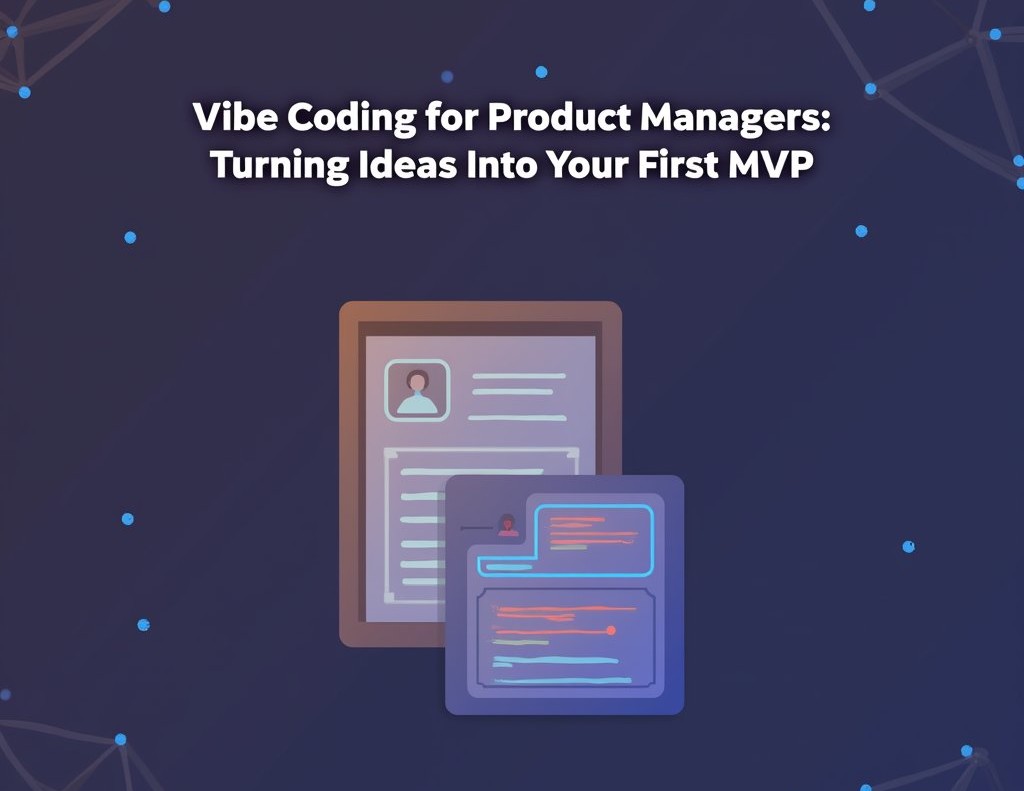
Vibe Coding for Product Managers: Turning Ideas into Your First MVP
In today’s fast-paced technology landscape, product managers are expected to bridge the gap between visionary ideas and functional products. The journey from conceptualization to a minimum viable product (MVP) can be daunting, especially for teams navigating limited resources, tight deadlines, and evolving customer expectations. Vibe coding has emerged as a transformative approach that empowers product managers to rapidly prototype, test, and iterate their concepts while maintaining strategic oversight.
Understanding Vibe Coding
Vibe coding is a development methodology that emphasizes rapid, iterative, and intuitive coding practices tailored for product managers who may not be full-time developers but need to translate product vision into a tangible MVP. Unlike traditional coding workflows, vibe coding focuses on speed, experimentation, and real-time feedback, allowing teams to test assumptions and validate ideas quickly.
At Product Siddha, vibe coding combines visual development tools, modular frameworks, and collaborative workflows to create a seamless bridge between product strategy and implementation. This approach ensures that product managers retain control over feature prioritization and user experience while reducing dependency on extended engineering cycles.
Why Product Managers Need Vibe Coding
For product managers, seeing an idea come to life is critical. First, it accelerates decision-making by providing concrete feedback from early users. Second, it enhances collaboration with development teams, as managers can clearly demonstrate workflows, feature logic, and user interactions. Third, it empowers managers to align product strategy with technical feasibility, ensuring resources are optimized and goals are met efficiently.
By integrating vibe coding into product management services, Product Siddha enables a more agile and responsive product development cycle. Product managers can experiment with multiple hypotheses, iterate on features, and pivot quickly without losing momentum or overwhelming engineering teams.
How Vibe Coding Transforms the MVP Process
The MVP process begins with identifying a core problem or market need. Through vibe coding at Product Siddha, product managers can quickly convert sketches, wireframes, or conceptual workflows into functional prototypes. This hands-on approach allows early testing with real users, generating actionable insights that guide further development.
Vibe coding tools often include drag-and-drop interfaces, prebuilt components, and simulation environments that mimic user interactions. These capabilities allow product managers to focus on validating assumptions, refining user journeys, and adjusting product features before committing significant resources to full-scale development.
The iterative nature of vibe coding also fosters a culture of experimentation. By testing different approaches quickly, product managers at Product Siddha can identify the most valuable features and eliminate those that do not meet user needs. This methodology ensures that the MVP is not only functional but strategically aligned with market demands and business objectives.
Practical Advantages of Vibe Coding
Vibe coding offers multiple advantages that make it particularly valuable for product managers and organizations:
- Speed and Efficiency: Rapid prototyping reduces development timelines, allowing faster market entry.
- Cost-Effectiveness: Early validation minimizes wasted resources on features that do not add value.
- Collaboration: Real-time prototypes improve communication between product, design, and engineering teams.
- Flexibility: Product managers can iterate based on user feedback without extensive technical overhead.
- Strategic Alignment: Ensures product decisions are guided by market insights and user needs rather than assumptions.
These benefits directly support Product Siddha’s product management services, helping organizations deliver impactful products while maintaining resource efficiency and strategic focus.
Applications in Technology and Product Management
In the technology domain, vibe coding enables product managers to rapidly experiment with software features, integrations, and user interfaces. In enterprise environments, it supports martech implementation, allowing marketing and operations teams to test automation workflows, data pipelines, and analytics dashboards without heavy engineering involvement.
This approach also complements product analytics efforts, as iterative prototypes can be instrumented with data collection points to monitor user behavior, engagement, and conversion metrics. Integrating vibe coding with analytics at Product Siddha provides product managers with actionable insights that drive evidence-based decisions and iterative improvements.
Contrasting with Traditional Development
Traditional development methodologies often require detailed specifications, lengthy development cycles, and significant engineering oversight. While effective for large-scale projects, these approaches can slow innovation and limit the ability of product managers to experiment and iterate. Vibe coding offers a more nimble alternative, emphasizing rapid feedback loops and user-centered design while maintaining technical feasibility and strategic control.
By adopting vibe coding within Product Siddha’s product management services, organizations can strike a balance between speed, quality, and market responsiveness, ensuring that MVPs meet both user expectations and business objectives.
Implementing Vibe Coding Successfully
Successful adoption of vibe coding requires clear alignment between product managers, development teams, and business stakeholders. Product managers should define core MVP objectives, prioritize features based on user value, and establish metrics for success. Tools and platforms that support rapid prototyping, modular design, and collaborative workflows are essential to streamline the process.
Training and hands-on experience with vibe coding platforms ensure that product managers can confidently translate their ideas into functional prototypes. Combined with ongoing product analytics at Product Siddha, this approach creates a continuous loop of feedback, learning, and refinement, enabling products to evolve dynamically in response to user needs.
Conclusion
Vibe coding represents a paradigm shift in how product managers approach MVP development. By bridging the gap between ideas and implementation, it empowers managers to experiment, iterate, and validate products efficiently. Integration of vibe coding within Product Siddha’s product management services enhances collaboration, accelerates time-to-market, and aligns product development with strategic goals.
For organizations seeking to innovate and respond to market demands, vibe coding offers a practical, agile, and highly effective methodology for turning ideas into impactful MVPs. By embracing this approach, product managers at Product Siddha ensure that every product iteration is informed, validated, and designed for real-world success, creating long-term value for users and businesses alike.
